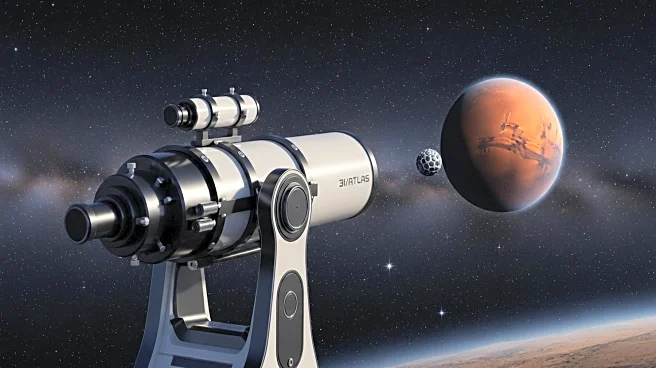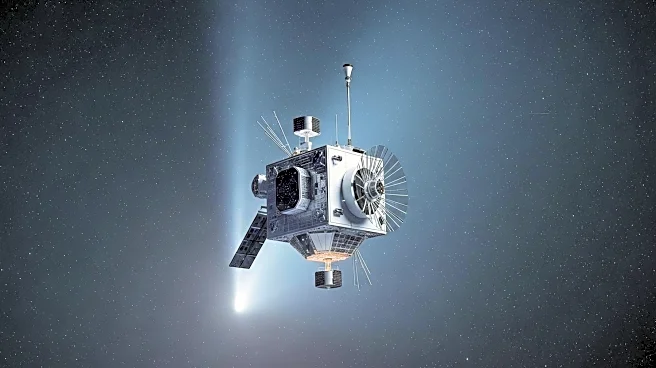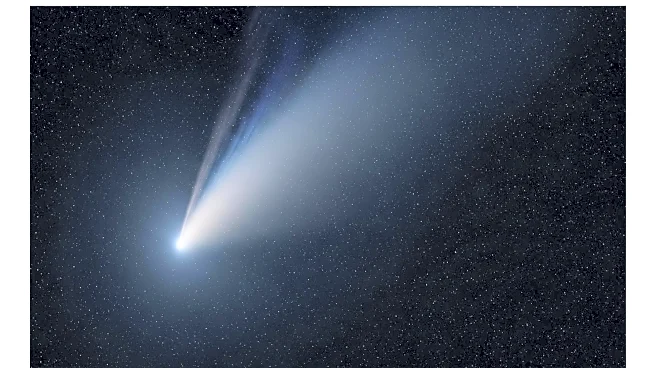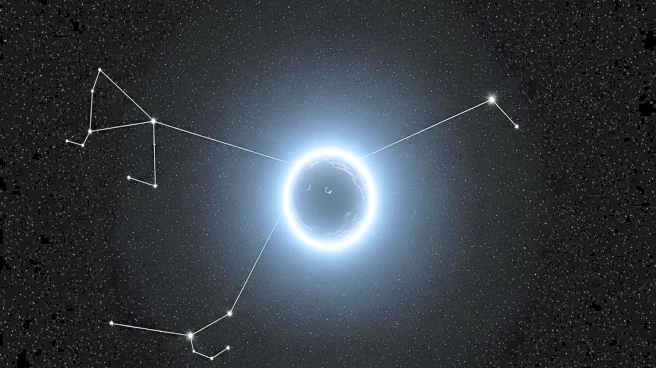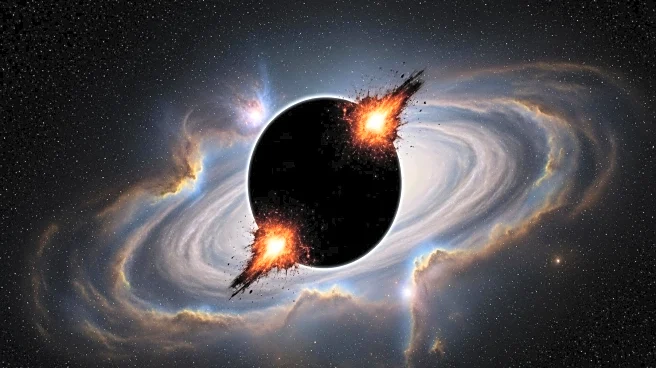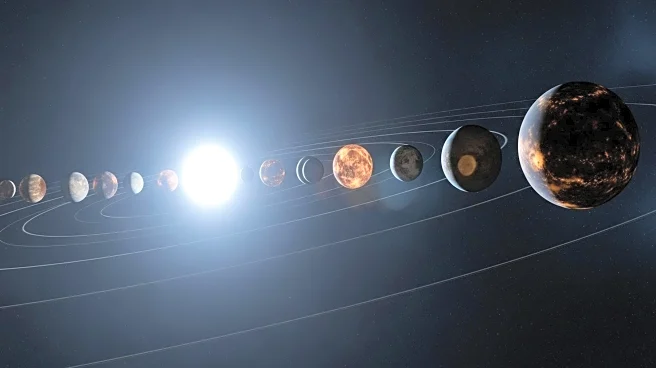What is the story about?
What's Happening?
A recent study by astronomers suggests the existence of a new hypothetical planet, dubbed Planet Y, in the outer solar system. The study, led by Amir Siraj from Princeton University, proposes that the tilted orbits of objects in the Kuiper Belt may be influenced by an unseen planet, potentially smaller than Earth but larger than Mercury. This hypothesis follows previous theories about Planet Nine, which have not been confirmed. The study aims to explain the unexpected tilt observed in the Kuiper Belt, suggesting that a planet could be responsible for this phenomenon.
Why It's Important?
The proposal of Planet Y adds to the ongoing debate and exploration of our solar system's structure. Discovering a new planet would significantly enhance our understanding of planetary formation and dynamics. The study highlights the challenges of observing distant regions like the Kuiper Belt, which remain largely unexplored. The potential discovery of Planet Y could lead to advancements in astronomical techniques and inspire further research into the solar system's mysteries.
What's Next?
The Vera C. Rubin Observatory, set to begin its survey soon, may provide more definitive evidence regarding the existence of Planet Y. As the observatory collects data, astronomers hope to gain a clearer picture of the Kuiper Belt's structure and any hidden planets. The findings could validate or refute current hypotheses, shaping future research directions and potentially leading to groundbreaking discoveries.
Beyond the Headlines
The study emphasizes the importance of continued exploration and technological innovation in astronomy. Understanding the Kuiper Belt and potential new planets could offer insights into the solar system's history and evolution. The research also highlights the collaborative nature of scientific inquiry, as astronomers worldwide contribute to unraveling cosmic mysteries.
AI Generated Content
Do you find this article useful?


